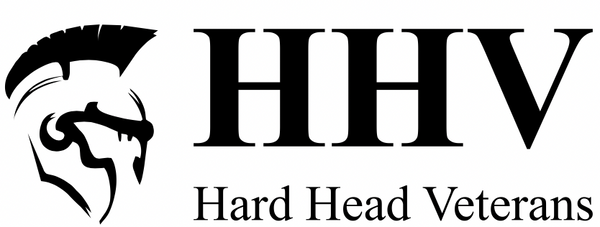The word "bulletproof" is often misused, especially when discussing helmets or vests. A more accurate description would entail the term "bullet-resistant," as these objects are not entirely impenetrable. Understanding the difference between the concepts is critical for those using these items as protection.
When faced with powerful weaponry, ammo and enough sustained fire, all body armor is vulnerable to some degree. The same applies to bulletproof glass. However, when the number of projectiles is minimal, many of these items effectively resist the impact of most incoming bullets.
Some armor has higher degrees of effectiveness than others. The National Institute of Justice (NIJ) uses a rating system to classify various levels of body armor. Additionally, some military tanks, ships and other vehicles use unique forms of armor conforming to separate standards that typically classify what they can resist.
Here is the Deal:
There is really no such thing as bulletproof helmets or any armor for that matter. There are bullet-resistant helmets and armor, but helmets that are positively bulletproof, meaning they will stop every single bullet fired into them is a misuse of the term bulletproof. Merriam-Webster defines the word bulletproof as being "impenetrable to bullets". There is only one thing that we currently know of that is truly bulletproof, and that is Superman.
Lesson Number One with so-called bulletproof helmets, vests, or vehicle armor is that they are not impenetrable. With enough sustained fire or the use of dedicated ammo, just about any type of armor ceases to actually be bulletproof. As you can see in the case of the up-armored HMMWV, penetrations were achieved on both the "bulletproof" glass and some of the hard-armor.

Now:
Some armor has extreme capabilities of the resistance offered and we use various rating systems to explain this resistance. The National Institute of Justice or NIJ publishes these levels and are the industry standard for most armors. Additionally, there are unique armor sets found on ships, tanks, and other vehicles that conform to their own standards, usually classified to what they can actually defeat and resist threat wise.

You Might Be Wondering:
What about these so-called bulletproof helmets? I want a ballistic helmet level IV! Well so do we here at Hard Head Veterans for our ATE Ballistic Helmet, but there is the little issue of weight. With advances in material fibers, metals, and ceramic armors, the weight required to achieve a true rifle rated ballistic helmet climbs with each NIJ rating achieved. In our testing with next-generation metals, we are adding 7-15 lbs depending on desired bulletproof helmet coverage to defeat M80 ball at normal velocities with safe backface deformation upon impact.

Luckily advanced ceramic and now fiber options have proven to be lighter and perform just as well. After a ton of R&D and working with Diamond Age Armor, we are excited to be offering our up-armor solution for our ATE ballistic helmets. Not only is it lightweight (right at a 1 lb), but it defeats the most common rifle rounds out there including 5.56 & 7.62X39! Made from silcon carbides it allows us to achieve incredible protection ratings with a thin and lightweight solution.
Performance:
- 62 X 39 M43 LS 123.7 gr. Russian MSC
- 2410 ft/s Front Impact- No Penetration - 21.206 mm BTD
- 56 X 45 M855 62 gr
- 3156 ft/s Front Impact- No Penetration - 14.306 mm BTD

Tactical Bulletproof Combat Helmet
Monolithic rifle rated helmets using advanced UHMWPE and processing techniques have just started to enter the market as well. These helmets are capable of defeating rifle rounds, but will come at the cost of extra weight and expense.

Want this patch? Check out milspecmonkey.com for it!
Kevlar Bulletproof Helmet
As far as fibers go, Kevlar is the most common material in the ballistic impacts industry because of its high tensile strength and lower cost. The ATE ballistic model consists mainly of Kevlar and is among our most popular items. It carries a Level IIIA rating from the NIJ, which means it can provide resistance against most small-arm projectiles up to a .44 magnum.
Combined with the Up-Armor shell, it offers one of the most effective solutions on the market at a relatively light 4 pounds.
Devtac Bulletproof Helmet
The devtac bulletproof helmet though? Isn't this a bullet proof helmet full face application that is lightweight and meets NIJ specs? First off we have to agree, this is a seriously cool looking "bulletproof helmet". Assuming that the devtac bulletproof helmet doesn't have any issues with limiting vision, fogging up, or anything else. The only tests we have seen are limited to pistol rounds, and not performed in a lab. Backyard tests are always fun, but if you require the helmet to do its job when worst comes to worst make sure it meets resistance to penetration tests, V50, backface, blunt, and more.
What's the Bottom Line?
Many of the helmets on the market meet the NIJ IIIA standards. However, that means they are only resistant up to those rounds in specific conditions. There are numerous other tests that a ballistic helmet should pass in addition to the resistance to penetration tests.
Check out our testing and warranty page to learn more about the strict testing criteria we use at Hard Head Veterans.
For more information about helmet testing, and specifically backface deformation testing, check out this video bellow. It goes in depth on what BFD for ballistic helmet testing actually looks like from the lab perspective!

